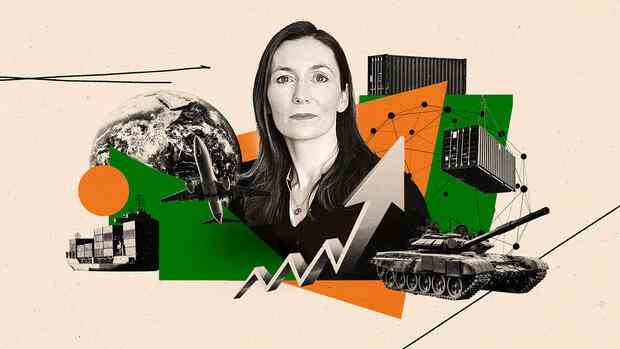Poland has enshrined a three percent target in law; for 2023 it is even planning four percent and more. Lithuania, Latvia and Estonia are targeting three percent, and Norway, Finland and France are also increasing their spending.
Germany supplies self-propelled howitzers, rocket launchers and main battle tanks.
(Photo: AP)
Chancellor Olaf Scholz recently reiterated his promise that Germany would spend 2 percent on defense. Although this has not yet been included in the financial planning, the political commitment is there. On the other hand, others, such as Spain and Belgium, fall short of the target. It is primarily countries in Central and Northern Europe that are investing more.
2. Discussion of alliance politics
The second example is alliance politics. Finland and Sweden have been discussing the question of joining NATO for years. Now things happened very quickly: a few weeks after the Russian attack, they submitted their applications and, with the exception of Turkey and Hungary, all the Allies ratified them at lightning speed.
Denmark’s decision to participate in EU defense policy, which it had previously deliberately avoided, received less attention.
3. Military support to Ukraine
The third example is military support to Ukraine. The Baltic states and Poland have hollowed out their armed forces to help Kiev. Poland delivered more than 260 T-72 tanks.
Estonia gave up its howitzer stock. Britain supplies main battle tanks and trains 10,000 Ukrainian soldiers every three months. Germany supplies self-propelled howitzers, rocket launchers and main battle tanks. Others also deliver, such as Spain, Croatia and Belgium – but to a much lesser extent.
In fact, a closer look reveals further fine cracks in the European facade. For example, most Europeans support funding for military aid through the EU Peace Facility.
But Austria and Ireland abstained. There were also problems with the EU sanctions packages: Hungary opposed personal sanctions. Poland insisted on stricter rules on import restrictions.
special concern
The examples show that the countries that are geographically closer to the events of the war were historically themselves victims of Russian or Soviet raids, such as Poland and Finland, or disappeared from the map, such as the Baltic states, which feel particularly affected by this war . And they seem all the more willing to support Ukraine and accept risks and hardships in return.
The external threat is still ensuring European unity. But there are three risks: in 2024 there will be elections in Great Britain, Finland, Slovakia, Romania and Lithuania, and the EU Parliament will also be elected. Changed majorities could weaken cohesion in Europe. The US elections are also crucial because they could call into question support for Ukraine and Europe.
This is how the Handelsblatt reports on the Ukraine war:
Secondly, positive developments, such as an end to the war, could also have negative side effects: the cessation of the external threat could challenge European unity and bring out known differences, for example with a view to the reconstruction of Ukraine, dealings with Russia and China and the question of whether threats from the east or from the south are more relevant.
Finally, cohesion threatens to crumble the longer the war lasts and the higher the cost to Europe, be it for energy, food or defense – and to support Ukraine, which will be all the more dependent on it.
Russia uses these divergences in a targeted manner to split the West, undermine freedom and democracy and thus weaken the West’s ability to act. It is therefore in Germany’s interest and core task of German foreign policy to continue to maintain the unity of Europe and its partners over the long term.
More: Do not miss any developments in the Ukraine war – everything new in our news blog
